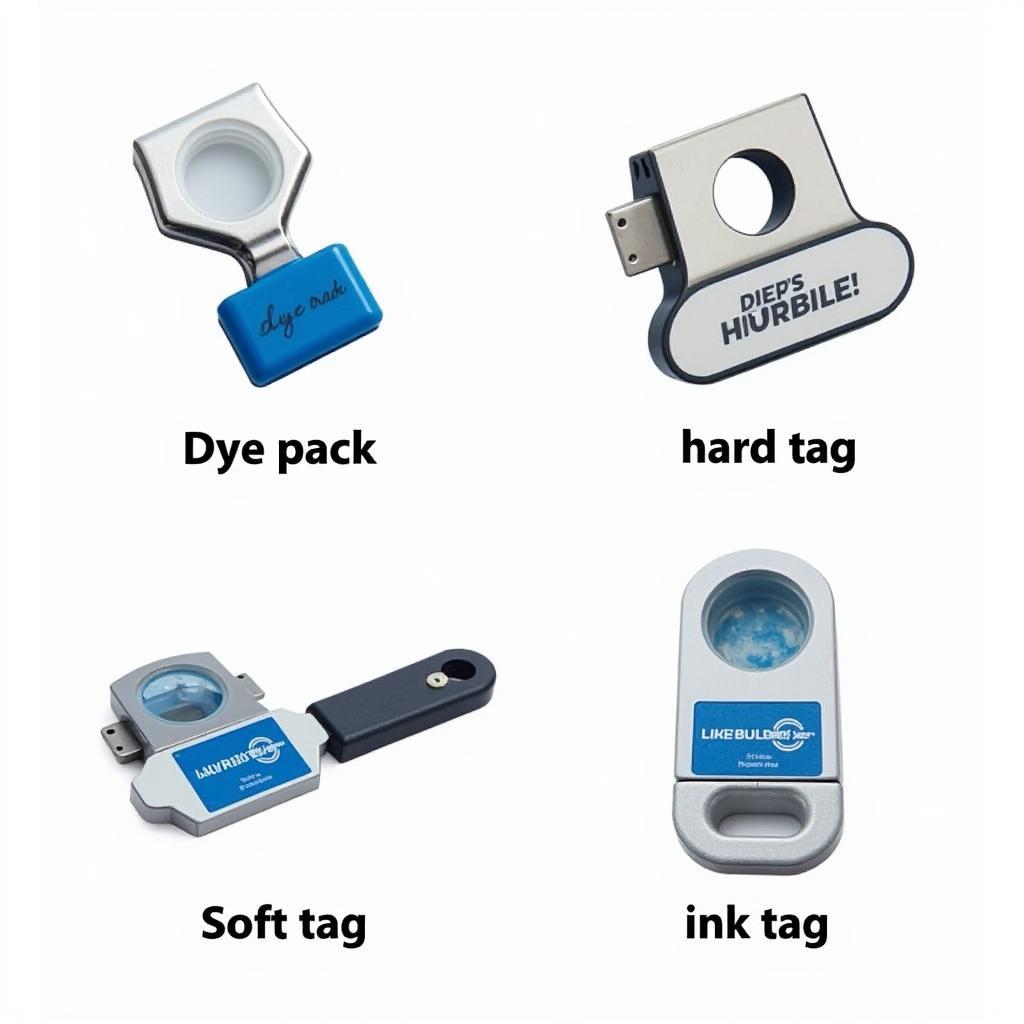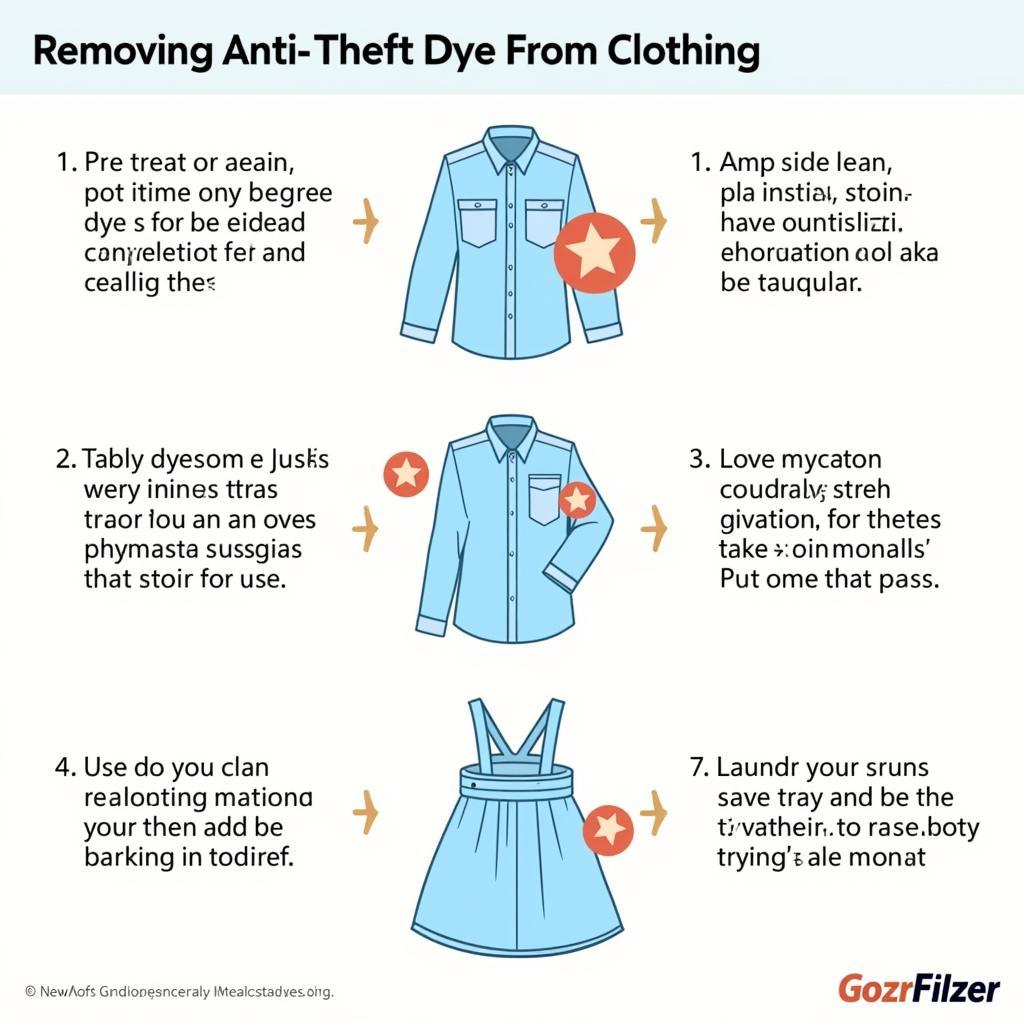Anti-theft dye is a security measure used by businesses to deter theft. It can be a real hassle to deal with if you accidentally trigger it. This guide will provide you with practical tips and solutions on how to remove anti-theft dye from various surfaces and items. We’ll also explore some preventative measures to avoid encountering this messy problem in the future.
Removing anti-theft dye can be challenging, as the dye is designed to be permanent and difficult to clean. However, there are various methods you can try, depending on the surface affected. How to remove anti theft tags provides further insights into dealing with these security devices.
Understanding Anti-Theft Dye
Anti-theft dye comes in various forms, including dye packs, tags, and stickers. These security devices contain a brightly colored dye, typically red or blue, that is released when the device is tampered with or improperly removed. The dye permanently stains clothing, skin, and other surfaces, making it a powerful deterrent against theft.
Different Types of Anti-Theft Dye Devices
There are several types of anti-theft dye devices, each designed for specific applications. Dye packs are often used to protect cash in transit or stored in ATMs. These packs explode, releasing the dye when tampered with. How to remove anti theft dye pack offers more specific advice on this. Anti-theft tags and stickers are commonly used in retail stores to protect merchandise. These devices contain smaller amounts of dye but can still cause significant staining.
“Understanding the type of dye device you’re dealing with is crucial for effective removal,” says John Miller, a Senior Security Consultant at SecureTech Solutions. “Different devices require different approaches, and using the wrong method can worsen the staining.”
 Various Anti-theft Dye Devices
Various Anti-theft Dye Devices
Removing Anti-Theft Dye from Various Surfaces
Removing anti-theft dye can be tricky, but several methods can help. For clothing, try using a mixture of baking soda and vinegar. This creates a paste that can help lift the dye. For skin, rubbing alcohol or nail polish remover can sometimes be effective. However, always test these solutions on a small, inconspicuous area first to ensure they don’t cause further damage.
Removing Dye from Clothing
Act fast! The sooner you address the stain, the better your chances of removing it. Pre-treat the stained area with a stain remover specifically designed for ink or dye. Then, launder the garment according to the care instructions. How to get store anti theft tags off provides more detailed information on removing these tags without triggering the dye. You might also want to check out how to get rid of anti theft tags for additional methods.
“Patience is key when dealing with anti-theft dye stains,” advises Maria Sanchez, a Textile Specialist at FabricCare Inc. “Multiple treatments and different cleaning methods might be necessary to achieve satisfactory results.”
 Steps to Remove Dye from Clothing
Steps to Remove Dye from Clothing
Removing Dye from Skin
If you get anti-theft dye on your skin, wash the affected area thoroughly with soap and water. You can also try using a gentle exfoliating scrub. Avoid harsh chemicals or abrasive cleaners, which can irritate your skin. Remember, the dye will eventually fade on its own.
Preventing Anti-Theft Dye Incidents
The best way to deal with anti-theft dye is to avoid it altogether. Always ensure that store personnel properly deactivate or remove anti-theft devices before you leave the store. Inspect your purchases carefully at the checkout counter to confirm that all security tags have been removed. How to remove anti theft stickers can offer useful guidance if you need to remove stickers yourself.
Conclusion
Anti-theft dye can be a nuisance, but with the right approach, you can minimize its impact. By understanding the different types of dye devices and employing the appropriate removal methods, you can effectively tackle this messy problem. Remember, prevention is always the best strategy. By being vigilant and taking preventative measures, you can avoid encountering anti-theft dye altogether.
FAQ
- What is anti-theft dye made of? The exact composition varies, but it often involves a combination of pigments, solvents, and chemicals designed to create a permanent stain.
- Is anti-theft dye harmful? While generally non-toxic, it can cause skin irritation in some individuals. Always avoid contact with eyes and mouth.
- Can anti-theft dye be removed from leather? Removing dye from leather can be challenging. Consult a professional leather cleaner for the best results.
- How long does it take for anti-theft dye to fade from skin? It typically fades within a few days to a week, depending on the individual and the amount of dye exposure.
- What should I do if anti-theft dye gets in my eyes? Flush your eyes immediately with plenty of water and seek medical attention.
- Are there any home remedies for removing anti-theft dye? Some home remedies, like baking soda and vinegar paste, can be effective, but results may vary.
- Can I sue a store if their anti-theft dye damages my property? This is a complex legal question, and consulting with a legal professional is recommended.
